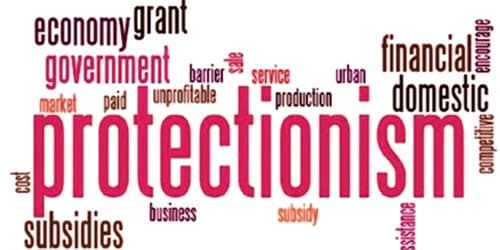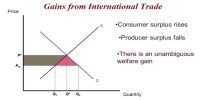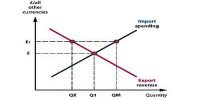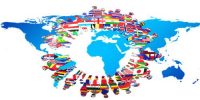A protectionist policy is a policy adopted by a country in which certain trade barriers are imposed on international trade for some specific reasons. It is the practice of protecting a country’s home industries from overseas competition by taxing imports. The general types of protectionism measures are tariffs, import quotas, and subsidies to home producers.
The following are some of the ways/mode/instruments used when a country practiced protectionist policy:
(a) TARIFF
Tariffs are taxes imposed on products imported to a country from abroad. Tariffs produce income for the government, that’s why they used to be the mainly admired form of trade protection. If a fixed amount of tax is imposed on each unit of the imported good we talk about an exact tariff.
- Is a tax imposed on imported goods?
- The main form of protection to protect local industries plus acting as a source of government revenue.
- Impact of such tariff results in a higher price of imported goods hoping that local demand will decrease.
- The degree of success of tariff protection strongly depends on the elasticity of demand for imported goods are higher the elasticity the more effective the use of tariff measure.
(b) QUOTA
Quotas are comparable to tariffs in the sense that they bound importation; only a permanent amount of goods can be imported to a country from abroad throughout a definite period of time. Just like tariffs, quotas plan to increase prices in the home country and this way support the local producers.
- Is a limit on the number of imports?
- Used to protect local industries as well as for political reason.
- Unlike tariff protection, the imposing quota will not affect the price of imported goods hence not going to increase the government revenue.
(c) EMBARGO
It is an authorized interdict on trade or other commercial activity with an exacting country. An embargo is regularly created as a result of critical political or economic conditions between nations.
- Physical control to ban the imports of certain goods like drugs, pornographies materials, etc.
- Imposed for economic, social and political reasons.
(d) EXCHANGE CONTROL
The government could bind the amount of foreign currency accessible to paying for imports. These are not allowed amongst member states of the European Union (EU), for example, and have become harder to maintain in a world of highly movable investment.
- Use to restrict or control the number of foreign currencies that can be bought by importers.
- The purpose is to restrict the ability to import.
(e) VOLUNTARY EXPORT RESTRICTION
Some quotas are voluntarily agreed between countries. This happened on a considerable number of occasions with Japanese firms (e.g. cars, televisions, videos) during the 1990s. Where the quotas have been agreed, they are known as Voluntary Export Restraints (VER’s).
- By using persuasion to ask another country to place a limit on its exports.
- Example, like country A, persuade country B to limits its car exports to relieve the competitive pressure on country A’s domestic car producers.
(f) Subsidies
Another method to support domestic producers in the competition with foreigners is by giving subsidies. The Common Agricultural Policy of the European Union uses subsidies to encourage domestic farmers to produce and help them fight against cheaper foreign agricultural products. While tariffs produce profits for the government, subsidies are a cost for the government.
(g) Nontariff barriers
Nontariff barriers include health and safety necessities, anti-dumping measures, managerial procedures and custom entry requirements. Basically, they restrict the importation of foreign goods to a country, but they are more complicated to compute than tariffs, and thus more hard to bargain at the WTO.














